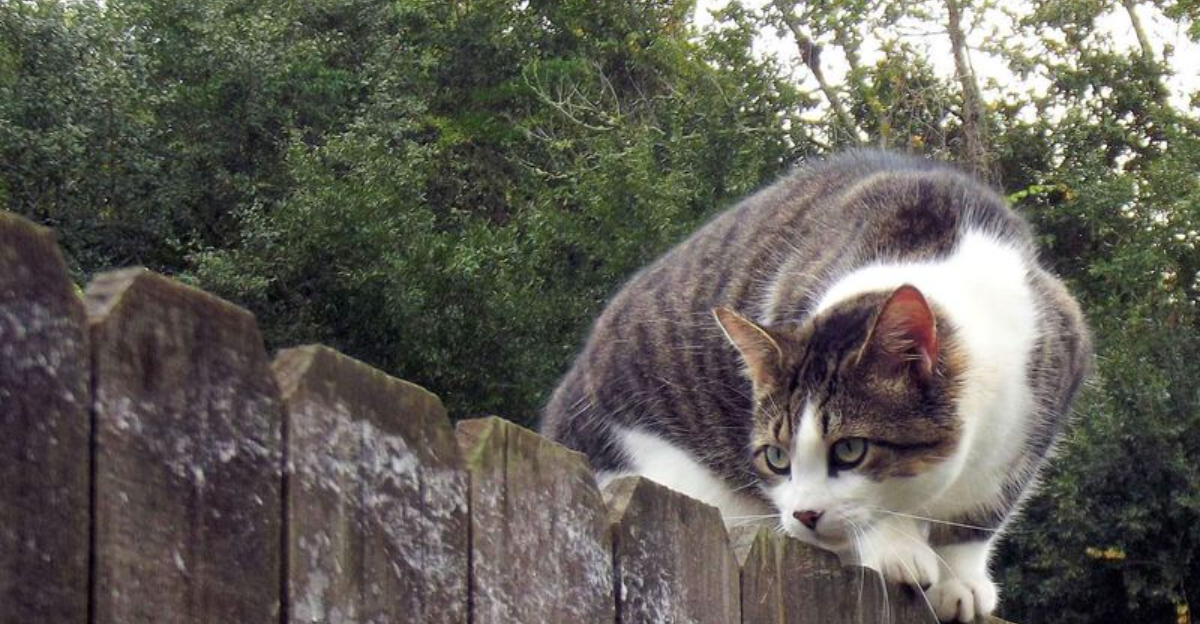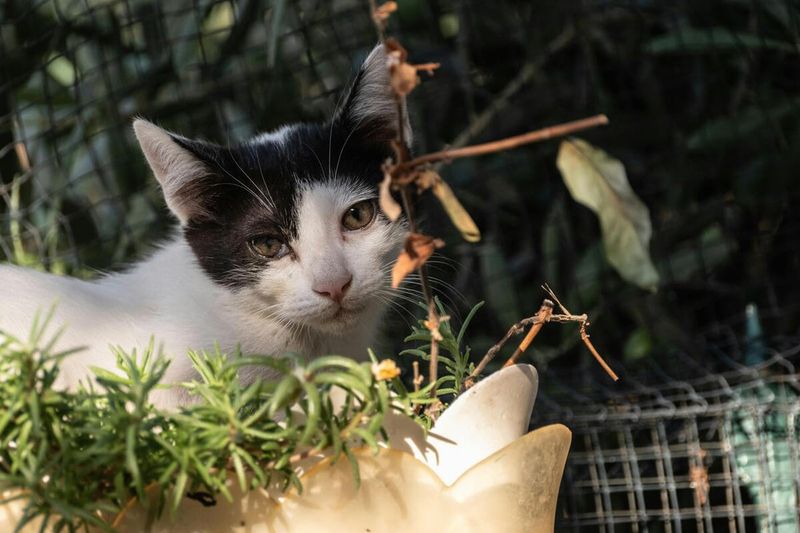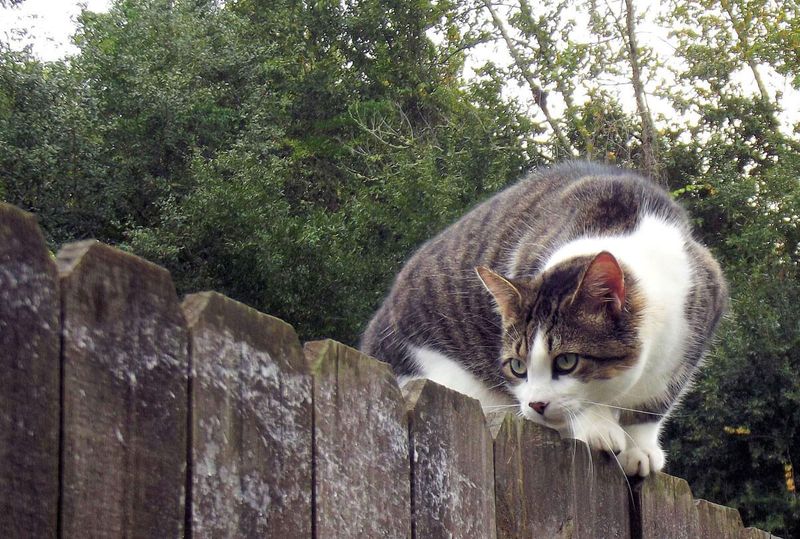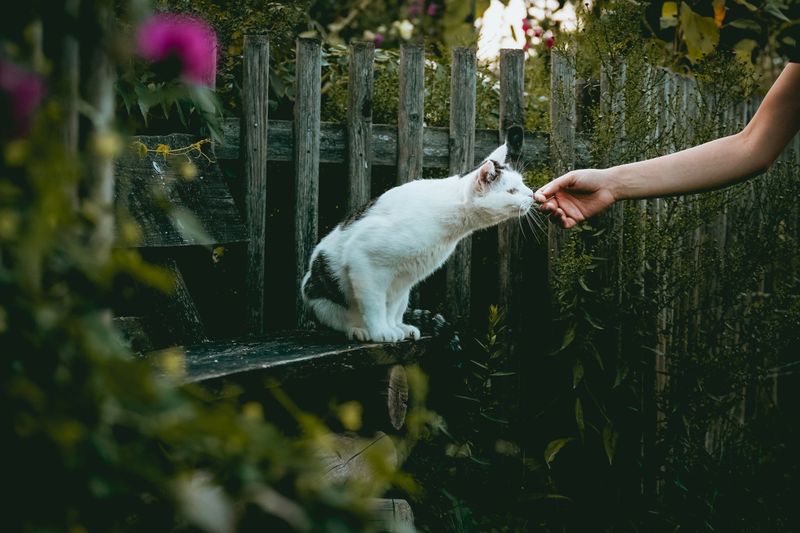📖 Table of Content:
- 1. Install Motion-Activated Sprinklers
- 2. Use Natural Scents
- 3. Create Physical Barriers
- 4. Provide Alternative Cat Shelters
- 5. Apply Non-Toxic Repellents
- 6. Engage in Community TNR Programs
- 7. Plant Cat-Repellent Plants
- 8. Use Ultrasonic Cat Repellers
- 9. Secure Trash and Food Sources
- 10. Install Cat-Proof Fencing
Stray cats can be endearing, but their presence may disturb wildlife or cause messes around your home. Finding humane ways to keep them at bay is essential for protecting both the cats and the environment. Simple, eco-friendly solutions can help maintain balance without harm.
From natural deterrents to clever landscaping choices, there are several effective strategies to discourage stray cats. These methods work by gently redirecting their behavior without causing stress or injury. Creating a cat-free space can help preserve local ecosystems and prevent unnecessary conflicts.
Implementing these approaches benefits both your property and the animals involved. By choosing humane solutions, you promote coexistence while keeping your surroundings clean and peaceful. Respecting wildlife and stray animals fosters a healthier and more harmonious environment for all.
1. Install Motion-Activated Sprinklers
A burst of water from motion-activated sprinklers can effectively deter stray cats, providing a harmless yet startling response to their presence. These eco-friendly devices conserve water while doubling as plant irrigation, making them a practical and humane solution for keeping feline visitors at bay.
Place these sprinklers strategically around your garden to cover potential entry points. Be sure to monitor and adjust their sensitivity settings to ensure optimal performance. This method is effective and humane, keeping your garden cat-free while maintaining its lush appearance.
2. Use Natural Scents
Cats are particularly sensitive to certain scents, which can be used to keep them at bay. Sprinkle citrus peels or essential oils like lavender around your garden. These natural scents are pleasing to humans and deter cats without causing them harm.
Additionally, consider planting strongly scented herbs such as rosemary or rue, which can act as both a deterrent and a delightful addition to your garden. This method is cost-effective and adds aromatic benefits to your outdoor space, making it an enjoyable area for you, but not so much for stray felines.
3. Create Physical Barriers
Building physical barriers is one of the most straightforward ways to keep stray cats out. Use fences or chicken wire to block off access to areas you want to protect. While installing these barriers, ensure they are tall enough and securely fastened to prevent cats from climbing over. This not only keeps cats out but also adds a sense of privacy to your garden.
Choose materials that blend with your garden’s aesthetics for an unobtrusive appearance. With these barriers, you can enjoy your garden without frequent feline visitors.
4. Provide Alternative Cat Shelters
Offering alternative shelters can redirect stray cats away from your main living areas. Set up a small, cozy shelter in a discreet part of your yard, enticing them to settle there instead. Use recycled materials to construct a shelter that’s eco-friendly and cost-effective.
Make it comfortable with soft bedding and ensure it’s weatherproof. By providing a designated area, you reduce their need to explore less desirable parts of your property. This method is compassionate, as it acknowledges their presence while guiding them to a more suitable location.
5. Apply Non-Toxic Repellents
An excellent way to deter cats without causing harm to them or the environment is by using non-toxic repellents. Available in stores or made at home, these sprays can be applied to garden beds, furniture, or other areas you want to protect. Focus on natural ingredients like pepper or garlic extracts, ensuring they are safe for plants and wildlife. To maintain effectiveness, apply regularly, especially after rain.
This approach is environmentally conscious and allows you to protect specific areas while maintaining harmony with nature. With consistent application, your garden becomes an unwelcome zone for stray cats, encouraging them to seek out other spaces instead.
6. Engage in Community TNR Programs
Participating in community Trap-Neuter-Return (TNR) programs helps control the stray cat population humanely. These initiatives involve trapping, neutering, and then returning cats to their original location.
By reducing the number of stray cats, you minimize their impact on your property and the local environment.
Consider collaborating with local animal shelters or community groups to support these efforts. This method not only addresses the immediate issue but also contributes to long-term solutions, promoting a balanced ecosystem. By engaging in TNR, you play an active role in humane population management.
7. Plant Cat-Repellent Plants
Cats are known for their curiosity, but certain plants can keep their investigative paws at a distance. Consider adding cat-repellent plants like lavender, rosemary, and rue to your garden. These plants don’t just add beauty and fragrance; they also deter cats naturally.
Lavender’s strong scent, for example, is disliked by felines. Meanwhile, rosemary’s robust aroma and rue’s bitterness make your yard less appealing. This natural solution keeps your outdoor space both cat-free and aromatic. Plus, they offer visual appeal with their lush foliage and vibrant colors.
8. Use Ultrasonic Cat Repellers
Utilizing technology to keep cats away can be both humane and effective. Ultrasonic cat repellers emit sound waves that are inaudible to humans but unsettling for cats. By placing these devices around your property, you can create a barrier that cats prefer to avoid.
These gadgets are environmentally friendly since they don’t involve chemicals or traps. They’re easy to install and can be moved according to your needs. With no harm to cats or the environment, ultrasonic repellers offer a modern solution to an age-old problem.
9. Secure Trash and Food Sources
Stray cats often visit areas where food is easily accessible. By securing trash bins and removing food sources, you can reduce the allure of your home. Ensure that your trash cans have tight-fitting lids and that pet food isn’t left outside overnight.
This preventive measure not only deters cats but also discourages other wildlife from visiting. A clean, well-maintained outdoor area is less tempting for wandering cats. It’s a straightforward way to manage stray cat visits without impacting the local ecosystem.
10. Install Cat-Proof Fencing
Fencing can be an excellent method to keep stray cats away from your garden. Cat-proof fencing is designed with angled tops to prevent cats from climbing over. This type of fence can be both functional and aesthetically pleasing.
By choosing materials that complement your garden, such as wood or coated metal, you maintain your yard’s charm. Installing this fencing creates a secure perimeter, ensuring that your garden remains a cat-free zone while still looking stylish.










